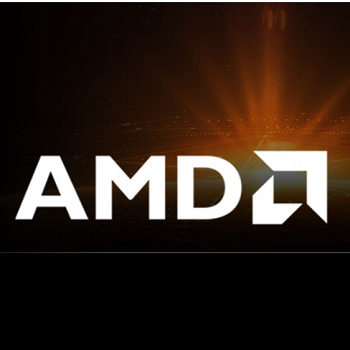Revenue for the quarter was up 55.6% from last year to $2.8 billion, GAAP profit was $390 million, 225% from last year.
AMD’s third-quarter was up from Q2 and year-to-year in sales.
Revenue was $2.8 billion, up 57% year-over-year primarily driven by higher Computing and Graphics segment revenue. Net profit was 148% quarter-over-quarter and up 225% year-to-year.
“Our business accelerated in the third quarter as strong demand for our PC, gaming, and data center products drove record quarterly revenue,” said Dr. Lisa Su, AMD president, and CEO. “We reported our fourth straight quarter with greater than 25% year-over-year revenue growth, highlighting our significant customer momentum. We are well-positioned to continue delivering best-in-class growth as we further extend our leadership product portfolio with the launches of our next-generation Ryzen, Radeon, and EPYC processors.”
Gross margin was 44%, flat from last quarter, and up 1 percentage point year-over-year. The year-over-year increase was primarily driven by Ryzen and EPYC processor sales.

Operating income was $449 million compared to $186 million a year ago and $173 million in the prior quarter. Non-GAAP operating income was $525 million compared to $240 million a year ago and $233 million for the previous quarter. Revenue growth in Ryzen and EPYC processor sales and semi-custom product sales drove operating income improvements.
Net income was $390 million compared to $120 million a year ago and $157 million in the prior quarter. Non-GAAP net income was $501 million compared to $219 million a year ago and $216 million for the previous quarter.
Graphics group
AMD’s Computing and Graphics segment revenue was $1.67 billion, up 31% year-over-year and 22% quarter-over-quarter. Revenue was higher year-over-year driven by a significant increase in Ryzen processor sales partially offset by lower graphics revenue. For the quarter, Ryzen also played a role, with revenue increase over the previous quarter because of higher Ryzen sales and boosted by increased revenue sales.
Client processor ASP was lower year-over-year due to an increased proportion of mobile processor sales. Quarter to quarter, client processor ASPs were higher quarter with more desktop sales and increased prices for the mobile processors sold.

GPU ASP was lower year-over-year due to product cycle timing and higher quarter-over-quarter due to product mix.
Operating income was $384 million compared to $179 million a year ago and $200 million in the prior quarter. Higher Ryzen revenue drove the year-over-year and quarter-over-quarter increases.
Enterprise, Embedded, and Semi-Custom
The Enterprise, Embedded, and Semi-Custom segments revenue were $1.13 billion, up 116% year-over-year, and 101% quarter-over-quarter. Revenue was higher year-over-year and quarter-over-quarter due to higher semi-custom product sales and increased EPYC processor sales.
Operating income was $141 million compared to $61 million a year ago and $33 million in the prior quarter. Higher revenue drove year-over-year and quarter-over-quarter increases.
All Other operating loss was $76 million compared to operating losses of $54 million a year ago and $60 million in the prior quarter.
Margin
AMD has been steadily improving its gross margin, but in this quarter, it was flat.

AMD expanded its position in the consumer and commercial client markets with new products and the growing adoption of AMD Ryzen processors by leading OEMs.
The company said OEM partners continued to launch new AMD-powered notebooks, desktops, and Chromebooks. These include new HP and Lenovo notebooks and desktops for the commercial, consumer, and gaming markets and the first Zen-based Chromebooks.
AMD announced new AMD Ryzen 4000 Series Desktop Processors with Radeon Graphics and AMD Athlon 3000 Series Desktop Processors with Radeon Graphics for the consumer market, as well as the new AMD Ryzen PRO 4000 Series and AMD Athlon PRO 3000 Series Desktop Processors for the commercial market.
AMD and Apple announced the availability of new AMD Radeon Pro 5000 series GPUs for the updated 27- inch iMac.
AMD is very jazzed about its new AMD Ryzen 5000 Series desktop processors, which they claim gives AMD an edge across gaming, single-threaded, and multi-threaded performance as well as power efficiency. The new 5000 series are built on the new Zen 3 core architecture and deliver a 19% generational increase in instructions per cycle (IPC), the largest since the Zen processors’ introduction in 2017.
AMD EPYC processor adoption continues to grow as data center customers harness our differentiated performance and features for cloud computing, high-performance computing (HPC), hyper-converged infrastructure (HCI), virtualization, and more.
Outlook
AMD’s outlook statements are based on current expectations. For the fourth quarter of 2020, AMD expects revenue to be approximately $3.0 billion, plus or minus $100 million, an increase of roughly 41% year-over-year and 7% sequentially. The company expects a year-over-year increase driven by the ramp of new Ryzen, EPYC, and semi-custom products and growing customer momentum.
AMD expects non-GAAP gross margin to be approximately 45% in the fourth quarter of 2020. AMD now expects 2020 revenue to grow by roughly 41% compared to 2019, up from prior guidance of 32%. The company expects Non-GAAP gross margins of 45% next quarter.
AMD and Xilinx announced they have entered a definitive agreement for AMD to acquire Xilinx in an all-stock transaction valued at $35 billion.
According to AMD: the combination will create the industry’s leading high-performance computing company, significantly expanding the breadth of AMD’s product portfolio and customer set across diverse growth markets where Xilinx is an established leader. The transaction is expected to be immediately accretive to AMD margins, EPS, and free cash flow generation and deliver industry-leading growth.
As a result of the deal, AMD will have a combined team of 13,000 engineers and over $2.7 billion of annual R&D investment. AMD says they have the talent and scale to be able to deliver an even more robust set of products and domain-specific solutions.
AMD expects the transaction to close by the end of the calendar year 2021. Until close, the parties remain separate, independent companies.
What do we think?
Timing is everything goes the saying, and AMD got stuck delivering fantastic final news and an epic acquisition during a falling stock market. The result was the company’s share price fell. However, that offers savvy investors a discount from what is sure to a higher-performing investment.

The day after AMD’s financial and acquisition announcement, the company announced its new Radeon RX6000. Featuring AMD’s RDNA 2 graphics, AIBs are expected Q4’20 for the high-end graphics market.
AMD recorded its highest ever quarterly mobile processor unit shipments and revenue, which drove revenue up. The company’s commercial and gaming notebooks sales more than doubled year over year.
AMD’s Ryzen CPU products are excellent processors, and the OEMs have shown a definite appreciation and desire for them. Unfortunately, AMD is seeing success as Intel is having manufacturing difficulties. As a result, too many people are saying AMD is only doing well because of Intel’s problem. That is unfair and doesn’t recognize AMD’s real value and hard work. It also doesn’t speak very highly of the OEMs who have adopted AMD.
AMD is also doing very well in the supercomputer market with both CPUs and GPUs.






